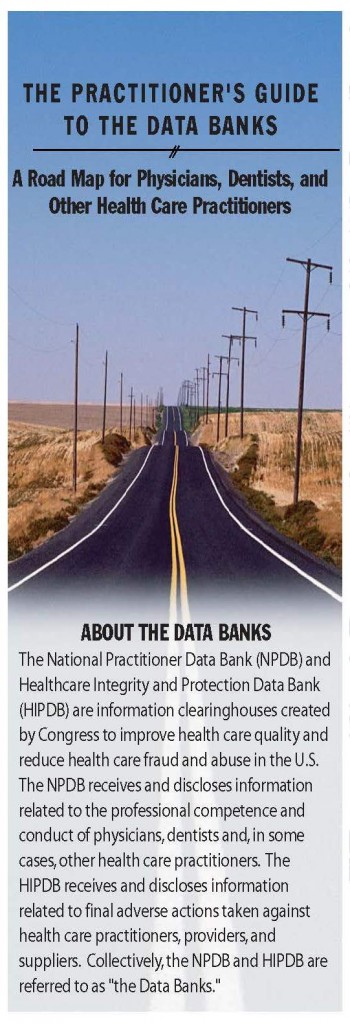
Policyholder Services
Practitioner’s Guide to the Data Banks
 The Practitioner’s Guide to the Data Banks provides an overview of the organizations and the reporting system.
The Practitioner’s Guide to the Data Banks provides an overview of the organizations and the reporting system.
The NPDB is primarily an alert or flagging system intended to facilitate a comprehensive review of the professional credentials of health care practitioners, health care entities, providers, and suppliers; the information from the Data Bank should be used in conjunction with, not in replacement of, information from other sources.
Prior to May 6, 2013, “the Data Bank” referred to two separately operated Data Banks: the NPDB and the Healthcare Integrity and Protection Data Bank (HIPDB). While the NPDB and the HIPDB were established for different purposes, overlap existed in some reporting and querying requirements. To eliminate this duplication, Congress passed Section 6403 of the Affordable Care Act of 2010 (ACA), Public Law 111-148. As a result of this legislation, NPDB operations were consolidated with those of the former HIPDB. Information previously collected and disclosed by the HIPDB is now collected and disclosed by the NPDB.
The three significant laws that currently govern NPDB operations are summarized here. NPDB regulations implementing these laws are codified at 45 CFR Part 60.
Visit the Data Bank web site for more information.
How to Get Started
Start a Self-Query
Get Self-Query Results
Check Your Report (Report Response Service Sign In)






